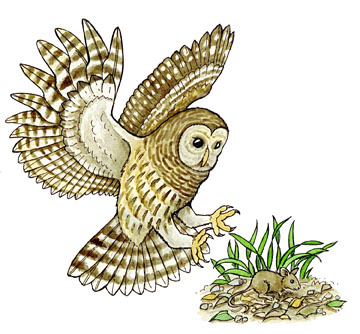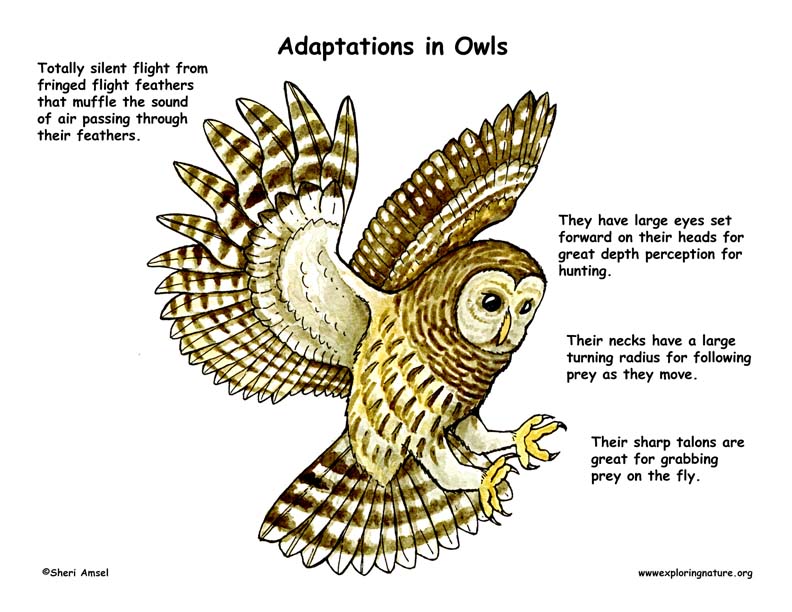

Adaptation in a population of living things happens as a result of an adaptive trait. This is any inheritable trait that increases its survival rate so that it can live longer, reproduce longer, and have more offspring (that also have that trait). Adaptive traits can improve an animal's ability to find food, make a safer home, escape predators, survive cold or heat or lack of water.
Owls have many adaptations for their life in the forest. They have totally silent flight from fringed flight feathers that muffle the sound of air passing through their feathers. This helps them sneak up on prey. Their excellent hearing allows them to sense small prey rustling in the leaves on the ground. They have large eyes set forward on their heads for great depth perception for hunting. The retinas of their eyes are packed with low light sensitive rods to see in low light. Their sharp talons are great for grabbing prey on the fly. All these physical adaptations help the owl to survive in its habitat.
For Discussion and Critical Thinking:
The owl has adaptive traits that help it survive in its forest habitat.
1. Name two of the owl’s adaptive traits and how it helps it survive:
2. Name two other animals from your yard, local parks or wild areas (forests, prairies, wetlands, mountains, etc.) who are nocturnal like the owl and an adaptation they have to help them survive.
3. How might an owl’s hunting senses differ from a hawk’s, who hunts during the day?
When you research information you must cite the reference. Citing for websites is different from citing from books, magazines and periodicals. The style of citing shown here is from the MLA Style Citations (Modern Language Association).
When citing a WEBSITE the general format is as follows.
Author Last Name, First Name(s). "Title: Subtitle of Part of Web Page, if appropriate." Title: Subtitle: Section of Page if appropriate. Sponsoring/Publishing Agency, If Given. Additional significant descriptive information. Date of Electronic Publication or other Date, such as Last Updated. Day Month Year of access < URL >.
Amsel, Sheri. "Adaptations of the Owl" Exploring Nature Educational Resource ©2005-2024. December 13, 2024
< http://www.exploringnature.org/db/view/1682 >

